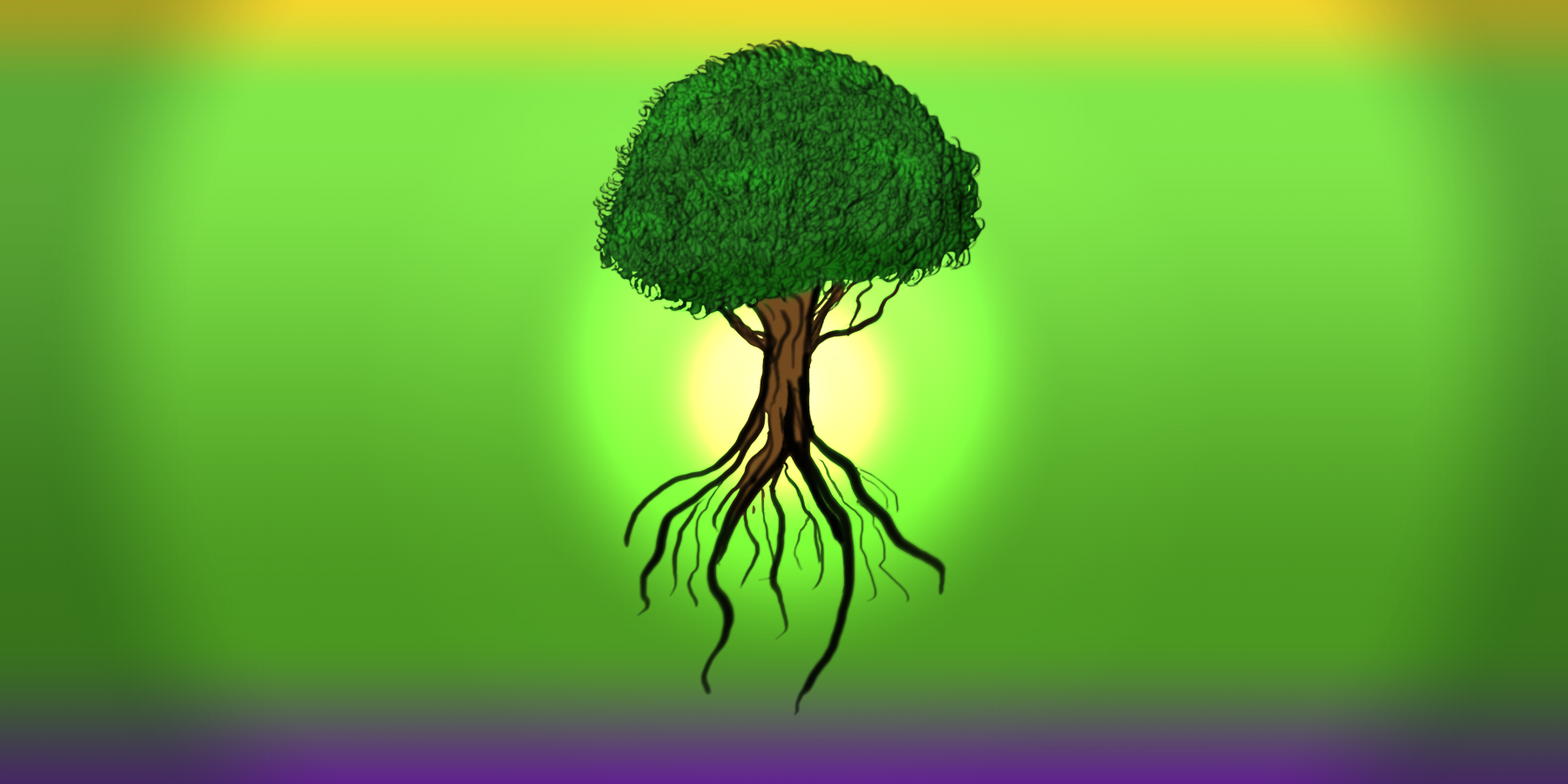Living fortress
Most of the Beasts from Above have an ability to fly or float. However, there are some species of them, which never possessed that ability. They usually fall into The Pit by accident while on their search for the food. Some adapt quickly and start to hunt for humans, while others spend their time searching for a way out (but still eating everything in their way).
One of such species are giant, towering living fortresses. Those enormous, peaceful beetle-like creatures tend to fall into the Pit after the ground collapses under their weight.
Basic Information
Anatomy
Living fortresses resemble walking mountains more than any kind of insect. They don't have an abdomen, and their head and thorax are completely merged together. Their underside is completely covered with hundreds of relatively short legs (about 1 meter each). Their backs are either formed into smooth spheres or jagged, rock-like cones. The chitin they are covered with is surprisingly thick, making them impervious to most attacks. The only soft parts of their bodies are their undersides and their faces.
Their "faces" are equipped with two pairs of mandibles of different length, serving to catch and bring their food closer to mouth. They have six black spots instead of complex eyes. Their venom is very slow-working, however, they are very patient and enduring hunters. Just like other Beasts from Above, they possess gas bladders which drastically lower the weight of their bodies. But as other Beasts have their gas bladders on the outside of their bodies, living fortresses have them inside their bodies.
Their "faces" are equipped with two pairs of mandibles of different length, serving to catch and bring their food closer to mouth. They have six black spots instead of complex eyes. Their venom is very slow-working, however, they are very patient and enduring hunters. Just like other Beasts from Above, they possess gas bladders which drastically lower the weight of their bodies. But as other Beasts have their gas bladders on the outside of their bodies, living fortresses have them inside their bodies.
Genetics and Reproduction
Their mating dance hasn't been observed as of yet.
Despite their looks, living fortresses mate the same way as their cousins, in a way the members of the Chilopoda class do.
The male leaves the spermatophore that the female has to find.
After she does so, she will lay around 5-10 eggs.
Despite their looks, living fortresses mate the same way as their cousins, in a way the members of the Chilopoda class do.
The male leaves the spermatophore that the female has to find.
After she does so, she will lay around 5-10 eggs.
Additional Information
Uses, Products & Exploitation
Their meat is edible but hard and chewy. It is a little sweet in its taste and it smells like sand.
Their hard legs and carapace can be used in the creation of strong armors and weapons.
Their gas bladders can be used to store the water or in the production of spearguns.
Anyone who wants to travel through the higher layers of The Surface needs to buy the oils coming from those beings and grease their clothes with them if they do not want to burst into flames the moment the ray of the sun touches them.
Their hard legs and carapace can be used in the creation of strong armors and weapons.
Their gas bladders can be used to store the water or in the production of spearguns.
Anyone who wants to travel through the higher layers of The Surface needs to buy the oils coming from those beings and grease their clothes with them if they do not want to burst into flames the moment the ray of the sun touches them.
Other names:
Mountain beetle
Geographic distribution:
They come from the territory above the Surface.
Growth rate:
Their growth hasn't been observed yet.
Perception & senses:
They can perceive the movement with their eyes and sense the vibrations in the ground through their legs.
Diet:
They feed mostly on the meat but can digest almost any biological matter.
Average intelligence:
Only smart enough to eat anything smaller than them.
Social structure:
They are loner creatures, but once in a while a male and a female can show up at the same time together.
Mountain beetle
Lifespan
Unknown
Average Length
10 meters in diameter and same in height.
Body Tint, Colouring and Marking
They vary in their body tint between that of a sandstone and a gray rock.
They come from the territory above the Surface.
Growth rate:
Their growth hasn't been observed yet.
Perception & senses:
They can perceive the movement with their eyes and sense the vibrations in the ground through their legs.
Diet:
They feed mostly on the meat but can digest almost any biological matter.
Average intelligence:
Only smart enough to eat anything smaller than them.
Social structure:
They are loner creatures, but once in a while a male and a female can show up at the same time together.



Comments